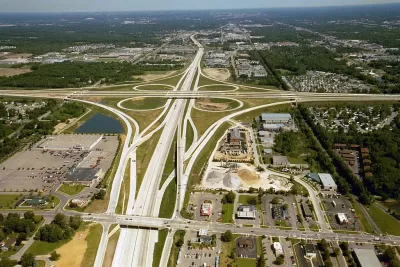Researchers from Denmark and Norway have looked at the accuracy of traffic forecasts for road projects. Their conclusion is that the forecasts systematically overestimate traffic growth rates and the resulting congestion effects.

Traffic forecasts often deliver influential input to the debate over whether or not to build new infrastructure to meet growing demand. The forecasts are important because they are used to calculate key performance indicators such as accident reductions and economic rate of return. As a result, they can play a decisive role in arguing for or against individual projects.
In a new article published in the scientific journal Transport Policy, two researchers from Aalborg University in Denmark and the Norwegian University of Life Sciences in Norway have compared the predicted and the actual traffic levels in business-as-usual scenarios used for Danish and English road projects. Their research shows that the traffic forecasts have predicted too high a growth rate in 7 out of 10 projects.
In the abstract, the researchers claim that "the main implication for planning practice is that the severity of future congestion problems is systematically overestimated. As a consequence, impact appraisals of road construction as a means of congestion relief appear overly beneficial." While it has not been possible to pinpoint the exact causes for the observed inaccuracy, the researchers argue that the most likely cause is that traffic is often assumed to continue growing regardless of available capacity. In reality, they claim, some people will find alternatives when congestion levels get too high, possibly choosing public transportation, moving closer to their workplace or finding a new job with a shorter commute time.
FULL STORY: Roads to nowhere: The accuracy of travel demand forecasts for do-nothing alternatives

Pennsylvania Mall Conversion Bill Passes House
If passed, the bill would promote the adaptive reuse of defunct commercial buildings.

Coming Soon to Ohio: The Largest Agrivoltaic Farm in the US
The ambitious 6,000-acre project will combine an 800-watt solar farm with crop and livestock production.

World's Largest Wildlife Overpass In the Works in Los Angeles County
Caltrans will soon close half of the 101 Freeway in order to continue construction of the Wallis Annenberg Wildlife Crossing near Agoura Hills in Los Angeles County.

California Grid Runs on 100% Renewable Energy for Over 9 Hours
The state’s energy grid was entirely powered by clean energy for some portion of the day on 37 out of the last 45 days.

New Forecasting Tool Aims to Reduce Heat-Related Deaths
Two federal agencies launched a new, easy-to-use, color-coded heat warning system that combines meteorological and medical risk factors.

AI Traffic Management Comes to Dallas-Fort Worth
Several Texas cities are using an AI-powered platform called NoTraffic to help manage traffic signals to increase safety and improve traffic flow.
City of Costa Mesa
Licking County
Barrett Planning Group LLC
HUD's Office of Policy Development and Research
Mpact Transit + Community
HUD's Office of Policy Development and Research
Tufts University, Department of Urban and Environmental Policy & Planning
City of Universal City TX
ULI Northwest Arkansas
Urban Design for Planners 1: Software Tools
This six-course series explores essential urban design concepts using open source software and equips planners with the tools they need to participate fully in the urban design process.
Planning for Universal Design
Learn the tools for implementing Universal Design in planning regulations.


























